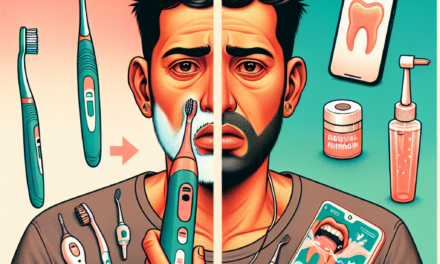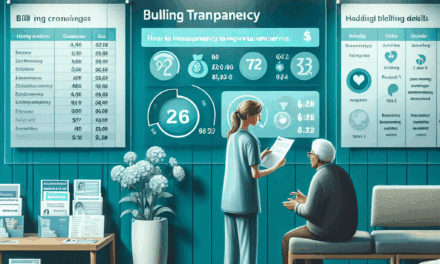Navigating Substance-Induced Psychotic Disorder: Diagnosis, Technology, and Treatment Strategies
Substance-Induced Psychotic Disorder (SIPD) is a complex mental health condition that arises from the use of psychoactive substances. It is characterized by the presence of psychotic symptoms, such as hallucinations and delusions, that occur during or shortly after substance use. Understanding SIPD is crucial for mental health professionals, patients, and their families, as it can significantly impact an individual’s life. This article delves into the diagnosis, technological advancements, and treatment strategies for SIPD, providing a comprehensive overview of this challenging disorder.
Understanding Substance-Induced Psychotic Disorder
Substance-Induced Psychotic Disorder is classified in the Diagnostic and Statistical Manual of Mental Disorders (DSM-5) as a condition that can occur due to the direct physiological effects of a substance. This disorder can be triggered by various substances, including alcohol, cannabis, hallucinogens, stimulants, and sedatives. The symptoms can mimic those of primary psychotic disorders, making accurate diagnosis essential.
1. Definition and Symptoms
Substance-Induced Psychotic Disorder is defined as the presence of hallucinations, delusions, or disorganized thinking that is directly attributable to the use of a substance. The symptoms can vary widely depending on the substance involved and the individual’s psychological makeup. Common symptoms include:
- Visual or auditory hallucinations
- Paranoia or delusional beliefs
- Disorganized speech or behavior
- Emotional instability
- Impaired insight into the condition
For instance, a person using methamphetamine may experience intense paranoia and auditory hallucinations, while someone using cannabis might have mild delusions or altered perceptions of reality. The duration of symptoms can also vary, often lasting as long as the substance is in the system and sometimes extending into withdrawal periods.
2. Risk Factors
Several factors can increase the likelihood of developing SIPD, including:
- History of substance abuse
- Genetic predisposition to mental health disorders
- Co-occurring mental health conditions
- Environmental stressors, such as trauma or chronic stress
- Age and gender, with younger males being at higher risk
Understanding these risk factors is crucial for prevention and early intervention. For example, individuals with a family history of schizophrenia may be more susceptible to developing SIPD when using certain substances.
3. Diagnosis Challenges
Diagnosing SIPD can be challenging due to the overlap of symptoms with other mental health disorders, such as schizophrenia or bipolar disorder. Clinicians must conduct a thorough assessment, including:
- Detailed patient history, including substance use patterns
- Physical examination to rule out medical conditions
- Psychological evaluation to assess mental state
- Collateral information from family or friends
Additionally, the timing of symptom onset in relation to substance use is critical for diagnosis. Symptoms must emerge during or shortly after substance use and not persist beyond the expected duration of intoxication or withdrawal. This nuanced approach is essential for accurate diagnosis and effective treatment planning.
4. The Role of Substance Type
The type of substance used plays a significant role in the manifestation of SIPD. Different substances can lead to distinct psychotic symptoms:
- Alcohol: Alcohol-induced psychosis can lead to hallucinations and delirium tremens during withdrawal.
- Cannabis: Cannabis use can result in paranoia and altered perceptions, particularly in high doses.
- Stimulants: Drugs like cocaine and methamphetamine are associated with severe paranoia and auditory hallucinations.
- Hallucinogens: Substances like LSD can cause profound alterations in perception and thought processes.
Understanding the specific effects of each substance can aid in tailoring treatment strategies and managing symptoms effectively.
5. Long-term Implications
While many individuals may recover from SIPD with appropriate treatment, there are potential long-term implications. Some individuals may experience persistent psychotic symptoms even after substance use has ceased, leading to a diagnosis of a primary psychotic disorder. Additionally, repeated episodes of SIPD can increase the risk of developing chronic mental health issues.
Research indicates that individuals with a history of SIPD may have a higher likelihood of developing schizophrenia or other mood disorders later in life. This underscores the importance of early intervention and comprehensive treatment strategies to mitigate long-term risks.
Technological Advancements in Diagnosis and Treatment
Advancements in technology have significantly impacted the diagnosis and treatment of Substance-Induced Psychotic Disorder. From telemedicine to artificial intelligence, these innovations are transforming how mental health professionals approach SIPD.
1. Telemedicine and Remote Assessments
Telemedicine has emerged as a vital tool in mental health care, particularly for individuals with substance use disorders. Remote assessments allow clinicians to reach patients who may be unable or unwilling to seek in-person treatment. This is especially important for those living in rural areas or facing mobility challenges.
Telehealth platforms enable clinicians to conduct comprehensive evaluations, monitor symptoms, and provide ongoing support. For example, a patient experiencing SIPD can receive immediate care through a virtual consultation, allowing for timely intervention and management of symptoms.
2. Artificial Intelligence in Diagnosis
Artificial intelligence (AI) is increasingly being utilized in mental health diagnostics. Machine learning algorithms can analyze vast amounts of data to identify patterns and predict outcomes. In the context of SIPD, AI can assist clinicians in:
- Identifying risk factors based on patient history
- Predicting the likelihood of developing chronic psychotic disorders
- Personalizing treatment plans based on individual responses to substances
For instance, AI-driven tools can analyze a patient’s substance use history and genetic predispositions to recommend tailored interventions, enhancing the effectiveness of treatment strategies.
3. Mobile Applications for Monitoring and Support
Mobile applications designed for mental health support are becoming increasingly popular. These apps can help individuals track their substance use, monitor symptoms, and access resources for coping with SIPD. Features may include:
- Symptom tracking and journaling
- Access to educational materials about SIPD
- Connection to support groups and mental health professionals
For example, an app that allows users to log their substance use and associated symptoms can provide valuable insights for both the user and their healthcare provider, facilitating more effective treatment planning.
4. Virtual Reality Therapy
Virtual reality (VR) therapy is an innovative approach that is gaining traction in the treatment of various mental health disorders, including SIPD. VR can create immersive environments that help individuals confront and manage their symptoms in a controlled setting. This technology can be particularly beneficial for:
- Exposure therapy for individuals with paranoia or delusions
- Relaxation techniques to reduce anxiety and stress
- Skill-building exercises to enhance coping strategies
Research has shown that VR therapy can lead to significant improvements in symptom management and overall mental health outcomes for individuals with SIPD.
5. Data Analytics for Treatment Outcomes
Data analytics plays a crucial role in evaluating treatment outcomes for individuals with SIPD. By analyzing patient data, clinicians can identify which treatment modalities are most effective for specific populations. This information can guide future treatment approaches and improve overall care quality.
For instance, a study analyzing the outcomes of various treatment strategies for SIPD may reveal that cognitive-behavioral therapy (CBT) combined with medication management yields better results than medication alone. Such insights can inform clinical practice and enhance patient care.
Treatment Strategies for Substance-Induced Psychotic Disorder
Effective treatment for Substance-Induced Psychotic Disorder requires a multifaceted approach that addresses both the psychotic symptoms and the underlying substance use disorder. Treatment strategies may include pharmacological interventions, psychotherapy, and support services.
1. Pharmacological Interventions
Medications play a critical role in managing the symptoms of SIPD. Antipsychotic medications are often prescribed to alleviate hallucinations and delusions. Commonly used antipsychotics include:
- Risperidone
- Olanzapine
- Quetiapine
- Aripiprazole
These medications can help stabilize mood and reduce psychotic symptoms. However, it is essential to monitor patients closely, as some antipsychotics can have side effects, particularly in individuals with a history of substance use.
2. Psychotherapy Approaches
Psychotherapy is a vital component of treatment for SIPD. Various therapeutic modalities can be effective, including:
- Cognitive-Behavioral Therapy (CBT): CBT helps individuals identify and challenge distorted thought patterns and develop coping strategies for managing symptoms.
- Motivational Interviewing: This approach encourages individuals to explore their ambivalence about substance use and fosters motivation for change.
- Supportive Therapy: Providing emotional support and guidance can help individuals navigate the challenges of recovery.
Integrating psychotherapy with pharmacological treatment can enhance overall outcomes and support long-term recovery from both SIPD and substance use disorders.
3. Support Groups and Peer Support
Peer support and support groups can be invaluable resources for individuals recovering from SIPD. These groups provide a safe space for individuals to share their experiences, learn from others, and build a sense of community. Benefits of support groups include:
- Reducing feelings of isolation and stigma
- Providing practical coping strategies
- Encouraging accountability and motivation for recovery
Organizations such as Alcoholics Anonymous (AA) and Narcotics Anonymous (NA) offer structured support for individuals dealing with substance use issues, which can be particularly beneficial for those with SIPD.
4. Integrated Treatment Models
Integrated treatment models that address both substance use and mental health disorders simultaneously have shown promising results. These models emphasize the importance of treating the whole person rather than focusing solely on one aspect of their condition. Key components of integrated treatment include:
- Coordinated care between mental health and substance use professionals
- Individualized treatment plans that address both disorders
- Ongoing assessment and adjustment of treatment strategies based on progress
Research indicates that integrated treatment approaches can lead to better outcomes for individuals with SIPD, reducing the risk of relapse and improving overall quality of life.
5. Relapse Prevention Strategies
Preventing relapse is a critical aspect of recovery from SIPD. Individuals must develop strategies to manage triggers and cravings effectively. Key relapse prevention strategies include:
- Identifying personal triggers and developing coping mechanisms
- Establishing a strong support network of friends, family, and peers
- Engaging in regular therapy and support group meetings
- Practicing self-care and stress management techniques
By equipping individuals with the tools they need to navigate challenges, relapse prevention strategies can significantly enhance long-term recovery outcomes.
Conclusion
Navigating Substance-Induced Psychotic Disorder requires a comprehensive understanding of its complexities, including diagnosis, technological advancements, and effective treatment strategies. As mental health professionals continue to explore innovative approaches to care, it is essential to prioritize individualized treatment plans that address both the psychotic symptoms and the underlying substance use disorder.
Key takeaways from this article include:
- The importance of accurate diagnosis and understanding the role of different substances in SIPD.
- The impact of technological advancements, such as telemedicine and AI, on diagnosis and treatment.
- The necessity of a multifaceted treatment approach that includes pharmacological interventions, psychotherapy, and support services.
- The value of integrated treatment models that address both substance use and mental health disorders simultaneously.
- The significance of relapse prevention strategies in supporting long-term recovery.
By fostering a holistic approach to care, we can improve outcomes for individuals affected by Substance-Induced Psychotic Disorder and support their journey toward recovery and well-being.





